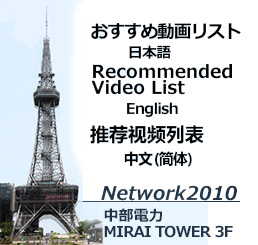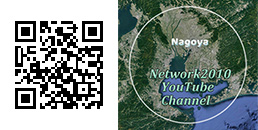- Nagoya in the Edo period(1603-1868)
- ①The Okehazama ancient battlefield
- ②Arimatsu to Miya post‐town
- ③Miya post-town
- ④Atuta Shrine
- ⑤Atsuta~Furuwatari
- ⑥Tachibana-cho
- ⑦Osu Kannon Temple
- ⑧Osu Monzencho
- ⑨Shirakawa Park
- ⑩Nagoya Castle Town 01
- ⑪Nagoya Castle Town 02
- ⑫Toshogu Shrine Festival
- ⑬Horikawa River1
- ⑭Horikawa River2
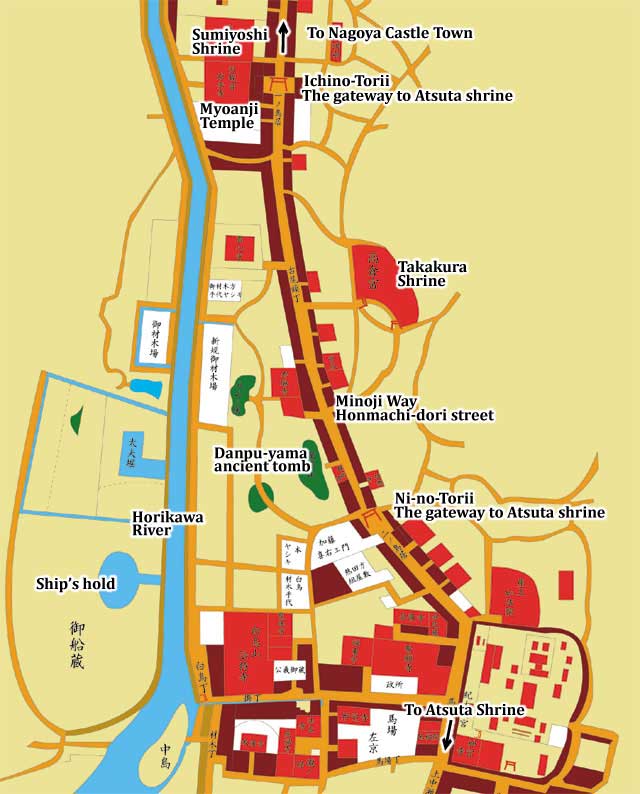
Atsuta~Ichu-no-torii
The Minoji is the way which branched with Tokaido in Atsuta, passed along the Nagoya Castle Town, and was connected to Nakasendo(Edo- period Edo-Kyoto highway). Mino Way from Atusta to Temma-kaisho (the place for intermediation) has been also called Honmachi street. Honmachi street was prolonged further north and connected with Nagoya Castle. People passed through Ni-no-torii in the place which passed over Atsuta Shrine and went Ichi-no-torii in Oto-cho.
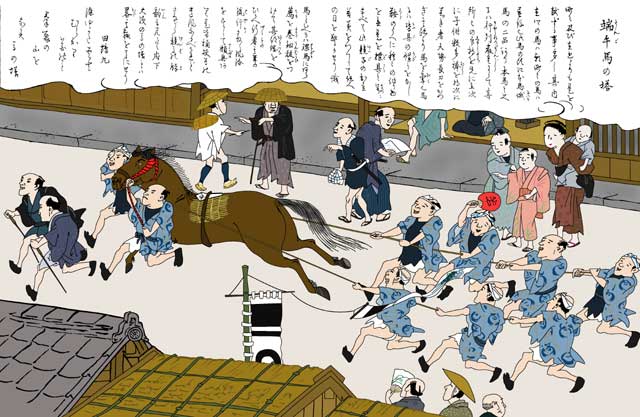
Tango(May) Uma-no-to
Uma-no-to is typical long-established custom in a festival in Owari,Mikawa region at one time. the horse decorated with gorgeous harness was dedicated to shrines and temples. Uma-no-to had been performed as the Shinto ritua even in Atsuta Shrine in May.
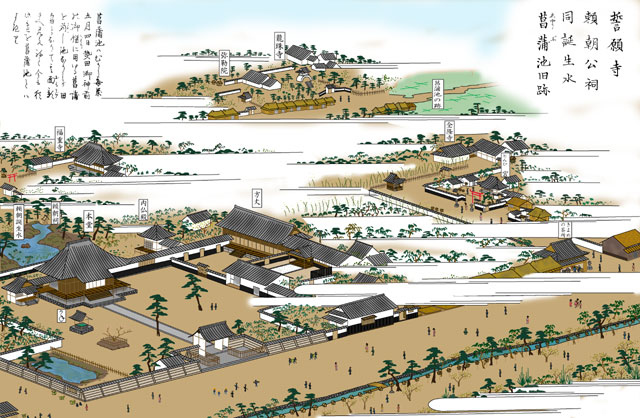
Seiganji Temple
The second house of the Fujiwara family(highest priest of Atsuta Shrine) was around Seiganji Temple in the Heian period (794-1185) last stage . It is called that Fujiwara Suenori's Daughter Yura married Minamoto Yoshitomo and bore Yoritomo in parents' home. Seigan-ji Temple was built by the remains of Fujiwara family's second house in 1529.
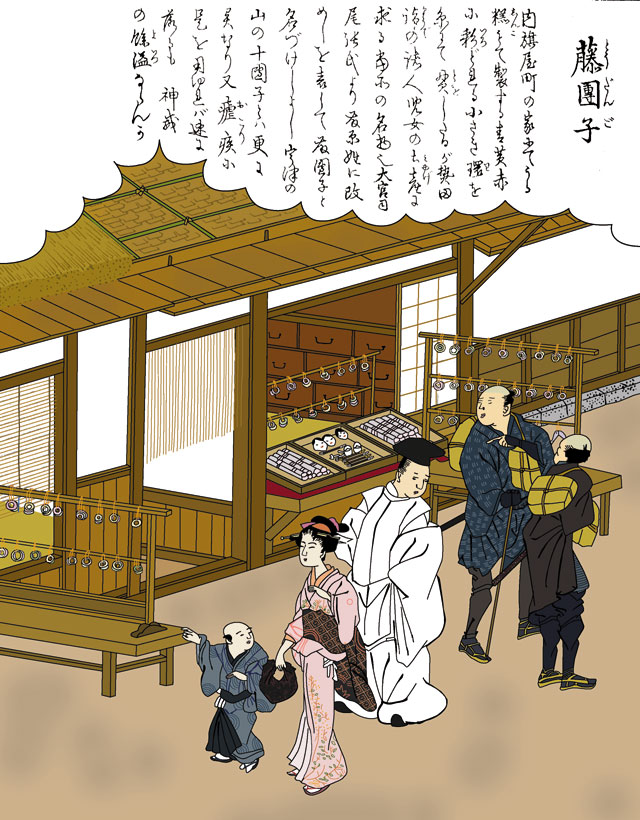
To-Dango(Japanese Cake)
To-Dango has been being transmitted more as a well-known product of Atsuta from ancient times. It is dry Japanese sweets using rice flour or sugar, and the rings of five colors are connected with hemp cord. It is believed that To-Dango has an effect in misfortune prevention or huge harvest.
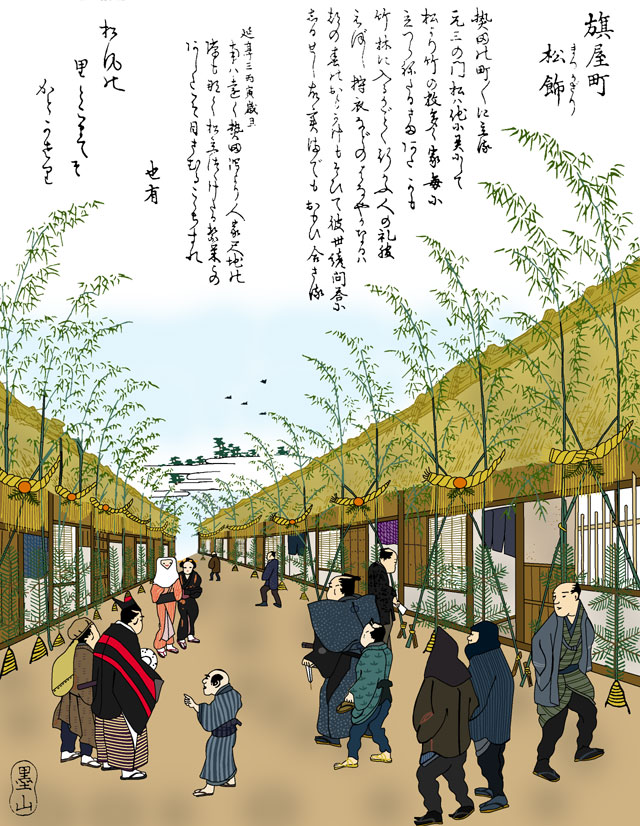
Hataya Town the New Year's Matsu-kazari(pine decorations)
Kado-matsu is also called Matsu-kazari and is stood in front of the gate of a house etc. in the New Year of Japan. It is believed that Kadomatsu is filled with the divine spirit, and God conveys his intention to man. Shime-nawa and Shime-kazari are also decorated in the New Year of Japan. It is shown that Shime-nawa is a sacred place suitable in order to deify God, and Shime-kazari points out the decoration which stuck bringers of good luck on Shime-nawa.
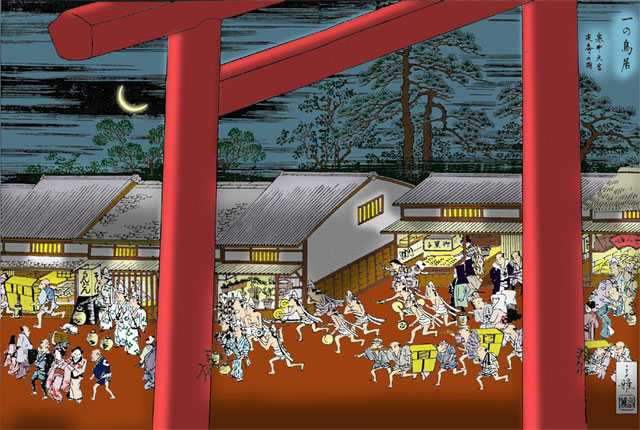
Atsuta Shrine Ichi-no-torii
Torii has a role like the gate of the entrance of the precincts of a Shinto shrine. There were eight Torii(s) in the surroundings of Atsuta Shrine. Especially Ichi-no-torii in Oto of Hommachi way was large and the height was no less than 11.6m. It has been told that the passerby was surprised, seeing this. Now, the monument of the remains of Torii is built on the west of Japan National Route 19.
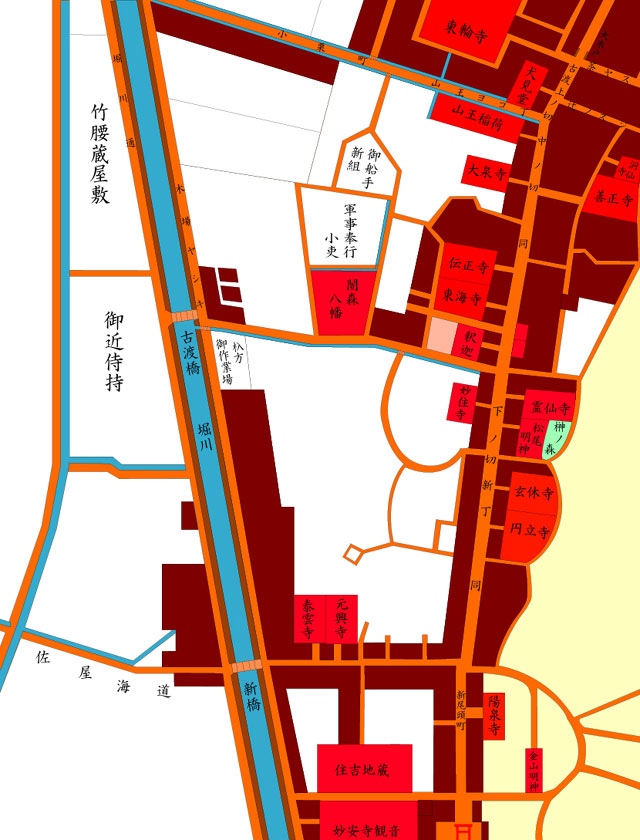
Atsuta Shrine Ichi-no-torii~Furuwatari Village
Furuwatari village adjoined southernmost end Tachibana-cho under Nagoya Castle. Kamakura Highway fixed by the Kamakura age (1185-1333) in order to connect Kyoto to the eastern provinces passed along the north side of the Sanno-jinjya shrine.
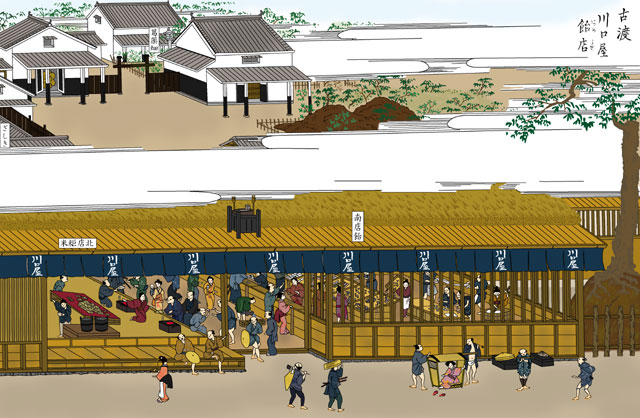
Kawaguti japanese candy shop
Furuwatari village adjoined entrance Tachibana-cho of Nagoya castle town. Kawaguchi-ya shop faced the east side of Hommachi way, and sold candy and Okoshi (millet brittle). The shop prospered by the visitors who visit to pray to Atsuta Shrine.

Sanno Shrine and Kamakura old way
Kamakura Highway is road traffic network which connected every place to Kamakura with the Kamakura shogunate in the Kamakura age (1185-1133).Oguri Way passed along the Furuwatari Shrine front by a part of Kamakura Highway.

